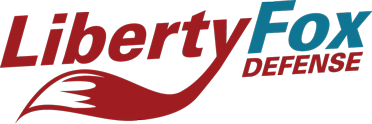July 26, 2016 we had John Pugliano out for his 3rd workshop.
Other blog articles on my thoughts of investing
Here are my notes. July 26, 2016
Wealthsteading workshop (15 attendees)
About John:
7 years in military
20 years corp america until he got out of the rat-race and is financially independent.
HOW TO BUILDI A CHART for S&P 500. Five, ten, 50 & 100 day moving average.
https://finance.yahoo.com/quote/%5EGSPC/news?p=^GSPC
Click on interactive chart
Add indicator | Simple moving average (SMA) | 50 day SMA should be RED
5 day should be green | 10 day yellow | 100 day should be purple.
RESOURCES:
http://www.wealthsteading.com/ (John’s podcast)
http://www.investablewealth.com/ (John’s blog) – I subscribe here to get quick notification of what John is doing (going in or out of the market)
Recommended Books
- The millionaire next door
- Richest man in babylon
- http://www.investors.com/ (not perfect, but is a good resource, now has “swing trading”
- One for the money
QUESTIONS:
- What is John’s method?
- Learn > earn > save…save until you have 50k. Then CAREFULLY swing trade by using 50/100 day moving average.
- Should I continue to contribute to a matched 401k if I don’t have an emergency fund? Most would say, yes contribute, but if you get sick or have a job loss without an emergency fund it is difficult to get your 401k money…especially from your current employer. I would say you shouldn’t contribute to your employer matched 401k unless you have one or two months expenses as your emergency fund.
- Is Dave Ramsey spot on? He does great physiological “help” to get people out of debt and on a budget. Which is excellent. But his “investing advice” is very poor…simpleton.
- Why is dollar cost avg bad? Its not that it is bad, its just lowest-common-denominator AKA non-intelligent.
- Why is buy & hold bad? Because doing “market corrections” you can lose 20-40% of your portfolio.
- Why is swing trading more intelligent? Go to cash aka money market when things are uncertain or take your profits early. While in cash, wait for a market correction and then after its gone down 20-30% BUY index 500 and ride it up. All the while watching the 50/100 day moving avg to know when to buy/sell. IF your employer’s 401k/roth has a money market, you can swing trade from cash to index 500.
- Is education a good investment? Depends. If its not a high priced IVY degree on something you won’t get a ROI, then no. If its cyber security or engineering from a local inexpensive college, yes. Investing in your mind/skills is always a good investment.
AGENDA
- How to save for /fund children’s education
- How to save for retirement – 401k/ira/roth? NOT INVEST
- How to avoid a catastrophic loss
FUNDING EDUCATION
*avoid student loans
* start at local or community college
* trade school/apprenticeship vs college
* start a business
* Get a functional education
NOT 529!
Don’t believe politicians when they say they are bringing back “jobs”.
Practical – integrate technology/automation.
Engineering, science, programming.
Cyber security> highest recommendation.
PARENTS ARE NOT responsible for educating adult children.
Do NOT fund your kids education with your retirement dollars.
RETIREMENT SAVINGS
401k IRA…these are vehicles NOT investments
Contribute to 401ks IF employer MATCHES.
ROTH is preferable because the growth is tax FREE.
Put away AT LEAST 11k a year!
When is the best time to plant a tree? 20 years ago, the 2nd best time is NOW. So it is with saving early.
Better to pay taxes on seeds, then harvest.
KEY TAKE AWAY – YOU are responsible for taking care of yourself in old age.
Avoiding a catastrophic Loss
50k or 30% of portfolio (whichever is higher) is considered a catastrophic loss.
Making money when the market is moving UP.
- Saving is NOT investing. If you have less than 50k, you are saving…NOT investing!
- Do NOT invest unless you know the industry. (know what you are doing).
- 50 day moving avg,
- Showed 50 day moving avg OIL, GOLD, real estate, S&P 500.
- Fastest way to lose your money is to get a divorce.
Buy & hold does work in the long run, but we can be more intelligent than that.
KEY TAKE AWAY
Buy & hold only works LONG TERM, but not a single decade.
If you are 50+, you only care about the NEXT decade, you most likely can NOT recover from a catastrophic loss.
Past 16 years, buy & hold would have made you 2% per year (does that 2% adjust for inflation?)
S&P 500 represented in ounces of Gold.
http://www.macrotrends.net/1437/sp500-to-gold-ratio-chart
Recommend vanguard because of low fees
QUESTIONS:
Why a 529 is bad?
If not traditional college, to get your money “out” you must pay extreme fees. You can’t go to cash when the market is in turmoil.
How many lost out in 2007? 2000?
Explain Index 500 (S&P 500): The 500 biggest companies in America.
TOTAL 5500 (roth or IRA, total is 5500).
Financial independence. 10, 15, 30 years of living expenses.
When everyone is panic, that is probably the time to invest in index 500.
Prefer ETF over mutal funds. Fund managers by law, can NOT go to cash/money market.
BONDS are NOT safe, swing trading is the safest.
What do you think of target index fund?
Hate them, lots of fees.
100-your-age = stock vs bond mix.
2015 Wealthsteading workshop RECAP
Wealth Building Cottage meeting
I recently hosted a cottage meeting with John Pugliano of investablewealth.com and I’m NOW “converted” into leveraging the stock market.
John has an excellent podcast! http://www.wealthsteading.com/
Here are my notes from the cottage meeting.
Why is money management so important? Because studies show that ½ divorces are related to money…or intimacy. Consequences of money mismanagement 10x years==very hard consequences to you and your family.
Realities of a “auction” of consumers w/o savings because of job loss or other life-event-disaster.
3 phases of money management.
Phase 1 – debt free
Phase 2 – 10% saving until 6 month of emergency fund, then move to phase 3. But NEVER touch your emergency fund…unless its an emergency.
Phase 3 – Return on investment. Passive income greater than expenses.
Questions:
Q:What is a commonly accepted 20 year avg of ROI on Index 500?
A:6-8%
Q:How much did Index 500 drop in BO crash of 2007?
A: 57%
Q: Assuming our house is paid for, how much should we plan for retirement?
A: 1-2 million depending on individual circumstances. John suggested that I have 2 million upon retiring.
Strategies on being disciplined? Americans consume because prices are going up & buying power is going down! No good ROI on money. We are Social Engineered to consume…not save.
Weird what happens in your mind when you know you can get 15% ROI…vs .0001% ROI. Easy debt from the govt vs private capital investment. Who owns who?
Pros/cons of investment vehicles.
-preps – food/gear/water/sanitation/defense
-permaculture
-stock market
-foreign currency exchange
-realestate
-small business/side business. IE buy $500 of leather, turn that into $5,000…with skill & labor
-Over funding a universal life insurance. AKA maximum funded tax advantage. AKA Missed fortune.
A: If it sounds complicated and they are making money off you, do NOT trust them.
– Roth IRA – employer match 100% of 6%…into a money market account vs stock market.
Scenarios.
ONE – socialist take over…consequences in the stock market
100k in 2005 invested in the market. Blindly dollar cost avg adding to Index 500…doing what the financial liers say.
How much money do you have in 2015? 10y later?
If you lose 50% in one year. after 10y, you have 89k!…assuming 6% ROI..except that 1 year where you lost 50%.
TWO-credit card debt. instant 17% ROI
5,000 in credit card debt. paying ONLY minimum payment.
How much will you owe in 10years?
THREE: 250,000 house. 15 year loan vs 30 year loan. 1% lower on 15y. 15y…no mortgage insurance.
250k 30y 4.5%. payment 1266+200 for tax and home owners insurance. plus 150 for mortgae insurance. Total 1617. Total financing charges 206k!
10y later you owe 200k
250k 15y 3.5%, pmt 1787, junk fees (tax/ins), total= 1987.. total financing charges 71k!
10y later you owe 96k!
cost diff. between 30 vs 15y. 2000-1600=$400.
plug in your numbers:
psychology of wealth
**saving
**basic investing principles
**pay smallest debt first
qualitative not quantitative–human nature
law of 72
72/10=7.2 interest –amount of time or amount of money
72/6=12 years –6% interest.
80% of millionaire in america are approx 50 years old, they live next door, 1 wife. Typically 1 house and 1 wife. House swapping and divorces are expensive!
Build framework of:
–take 20% profits
–limit losses to 8%
don’t buy stocks during confirmed downtrends
consider selling stocks during market turbulence
BUILDING WEALTH
-apprentice –7 years to master
-business model (entrepreneur)– make money off skill. takes the risk, get reward.
-investment income–
Summary of key-take-aways:
Once you are debt free, saving 10% of your income until you have a 3-6 months of expenses (emergency fund). Then you can sock that 10% into a money market account. Once you have 50k, then buy Index 500 when the stock market is down. Sell when the Index 500 is flat or nearing highs (like it currently is), then go to cash (money market).
So, I’ve had a mix for my ROTH IRA of 85% money market, 15% index 500. I put everything into a money market because I believe the stock market is unjustifiably high & BO Insurance (AKA unhealth care) among many other things, like every tax payer will pay 1.1 Million for future unfunded “social justice” programs. AKA unconstitutional programs.
When the market corrects and is near the bottom, I will convert the money market and buy index 500. When I make 20%, I’ll convert to money market again.
My key take-aways is…be debt free. build a frame work where you are saving 10%. Once you have 50k (self advisement) 250k(hire John to manage) put that money to work for you. The return of the principle is more important than the return on investment 🙂
Watch the Index 500(and/or read John’s blog) , when it peaks or levels off…go to cash. When its bottomed out, convert the cash to index 500.
How NOT to lose your savings in the stock market
Principles taught by John Pugliano of wealthsteading & investable wealth
The index 500 fund within our retirement is called:
Vanguard Institutional Index Instl Pl http://www.morningstar.com/funds/XNAS/VIIIX/quote.html
The money market is a bit easier to identify:
Vanguard Prime Money Market Instl
Most of us have had a nice ride up the past 4 years (2011-2015), take your profits early and protect your principle.
The simpletons buy & hold and have dollar cost avg, but if you listen to John’s podcast, you’ll be able to swing trade and not lose 20-30% and be able to make 20+%
http://www.wealthsteading.com/category/wealth-building-principle/
I suggest you read this article from John.
http://www.investablewealth.com/swing-trading-in-one-chart/
by following the 50 day moving avg & 200 day moving avg, you would have missed out on all the times the market really tanked.
Here is my chart I watch…almost daily.
I was lucky enough to be in a money market BEFORE 2007 crash!




Great information and reminders on where to put investment dollars and having a business. It inspires me to put my leather work out there and get a ROI, rather than simply doing it for “fun” and for gifts. If it is good enough for gifts which friends and family will actually use with pride, it is good enough to sell.
Cheers.